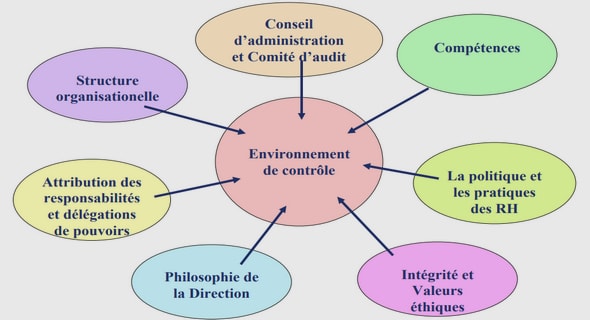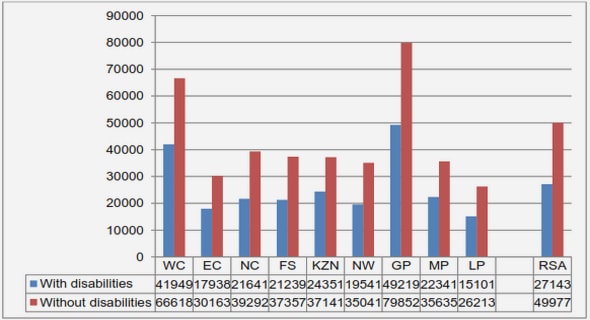Get Complete Project Material File(s) Now! »
The interaction between plasmons and excitons
Hybrid nanomaterials attracted great interest in recent years because they may feature synergistic properties besides the inherent characteristics of the components.57 Interactions between noble plasmonic metals and excitons can give rise to a variety of interesting phenomena. Basically, one can discern two cases: weak coupling and strong coupling.58
Weak coupling between surface plasmons and excitons
In the case of weak coupling, the excitons of the fluorescent substances and the metal surface plasmons are typically considered unperturbed. In this regime, the optical properties of the fluorescent emitters can be controlled by the metal surface plasmons. The oscillating electrons of the metal plasmons can induce multiple responses, such as i)fluorescence enhancement or quenching, ii) changes in fluorescence spectra or iii) strong modification of the radiative lifetime, depending on the hybrid structures.59
Enhancement of fluorescent intensity
Low fluorescence intensity and photostability greatly limit the applications of fluorescent materials in bio-sensing and bio-imaging applications, as well as in light-emitting devices.60 Metal-enhanced fluorescence was first proposed in the 80s. Since then, many studies have shown that metal plasmons exhibited a promising potential to tailor the fluorescence behavior.61-63 In this part, the mechanism of metal-enhanced fluorescence is discussed.
Basically, the excitation near the surface of plasmonic metals can be enhanced by the local electric field; meanwhile the radiative and non-radiative rate of light-emitters can be increased by the Purcell effect and the energy transfer to the metal, thereby changing the whole quantum yield of the light-emitters.64 Depending on the configuration of the plasmon-fluorescence system, the combination of these two effects can result in a fluorescence enhancement or quenching.
New phenomena arising from the coupling between excitons and plasmons
Besides the enhancement in fluorescence intensity, many interesting characteristics derived from the interaction between excitons and plasmons have been observed. However, these new phenomena should not be considered isolated from the enhancement in fluorescence intensity because they may be simply different sides of the same underlying physical process.
Most of the fluorescence analyses are based on the fluorescence intensity. However, the intensity is sensible to the external environments and makes the detection of the intensity change not precise. On the other side, a spectral modification, such as a wavelength shift, can Figure 1.9. (a) Fluorescence rate as a function of particle-surface distance z between an Au nanoparticle and a fluorescent molecule (red curve: theory, dots: experiment). (b) Fluorescence rate image of a single molecule when z = 2nm. (c) Schematic representation of the experimental setup; inset clearly shows that a gold particle is attached to the end of a pointed optical fiber. Reprinted from Ref [69]. be detected easily. A hybrid nanostructure is fabricated by connecting Au nanospheres and CdTe nanowires via molecular linkers (Figure 1.10a).71 The excitons in the CdTe nanowires drift and diffuse because of the non-uniform diameter of the CdTe nanowire. In the presence of Au nanospheres, the exciton lifetime decreases and not all excitons have enough time to decay to the minimum potential, leading to a red emission shift. Attaching target proteins to molecular linkers can alter the distance between Au and CdTe, and thereby result in a shift of the emission wavelength (Figure 1.10b and c). This technology can resolve difficulties in the quantification of fluorescence intensity under different optical conditions.
Formation of a CdS shell on CdSe cores
A precursor solution for the growth of the CdS shell was made by mixing 24 mL of 0.1 M S-ODE in ODE and 5 mL of a 0.5 M solution of Cd(oleate)2 in oleic acid. 2 mL of oleylamine were added to 4 mL of the CdSe nanocrystals solution in ODE (C = 2.86×10–5 M) and heated to 260 °C for 20 min under Ar flow. 4.5 mL of the precursor solution were added dropwise within 2 h. The temperature was raised up to 310 °C and another 22.5 mL of the precursor solution was injected at a rate of 15 mL/h. The mixture was cooled down to room temperature and the nanocrystals dispersed in ODE were precipitated with ethanol. The precipitate was taken up in 10 mL of hexane and 40 mL of ethanol were added to precipitate the QDs. This washing process was repeated one more time. The CdSe/CdS QDs were taken up in hexane and characterized optically and by electronic microscopy (Figure 2.1). Their final radius was 6.0±0.5 nm, corresponding to a CdS shell thickness of 4.5±0.5 nm.
Synthesis of 15 nm-in-radius-CdSe/CdS core/shell QDs
CdSe cores were synthesized as per a protocol adapted by Mahler from Yang et al. with slight modifications.12,15 A dispersion of selenium powder (12 mg) in ODE (8 mL) was added in a three-necked flask to cadmium myristate (174 mg) and additional ODE (8 mL) was further introduced. The mixture was degassed for 30 min under vacuum and then the flask was filled with argon and heated up to 240 °C. After 25 min, 570-nm-emitting cores were obtained. Oleic acid (200 μL) was injected at this temperature and the solution was heated up to 260 °C. At this temperature, oleylamine (2 mL) was injected and the reaction was further stirred for 20 min. The temperature was raised to 280 °C and 4 mL of a mixture of Se-ODE (0.1 M, 5 mL) and cadmium oleate (0.5 M, 1 mL) were injected dropwise (36 mL/h), while progressively rising the temperature until 305 °C. After the addition of the precursors, the solution was rapidly cooled down to room temperature. The 630-nm-emitting CdSe QDs (2.9 nm in radius) were washed with ethanol and then taken up in hexane (10 mL).
Formation of a CdS shell on CdSe cores
In a three-necked flask, a mixture of freshly-made CdSe cores (40 nmol), ODE (5 mL) and cadmium myristate (10 mg) was degassed for 30 min at 70 °C under vacuum. The flask was then filled with argon and heated up to 260 °C. At this temperature, oleylamine (2 mL) was injected and the reaction was further stirred for 20 min. 4.5 mL of a mixture of S-ODE (0.1 M, 16.5 mL) and cadmium oleate (0.5 M, 3.5 mL) were added dropwise (2.25 mL/h). After injection, the temperature was raised to 310 °C. At this temperature, the remaining 15.5 mL of the precursor solution were added dropwise (7 mL/h). After injection, 22 mL of the reaction medium were withdrawn, and another 20 mL of a mixture of S-ODE (0.1 M, 16.5 mL) and cadmium oleate (0.5 M, 3.5 mL) were added dropwise (7 mL/h) to the QDs remaining in the flask. The solution was then cooled down to room temperature. The core/shell CdSe/CdS QDs were finally washed with ethanol and redispersed in hexane (QDs concentration: 1.42 μM). The CdSe/CdS QDs were characterized optically and by electronic microscopy (Figure 2.2). Their final radius was ~ 15 nm, corresponding to a CdS shell thickness of 12.1 nm.
Table of contents :
General Introduction
Chapter 1 Surface Plasmons, Fluorescence and Their Coupling
1.1 Surface Plasmon Resonance
1.1.1 Introduction to Plasmon resonance
1.1.2 Propagating Surface Plasmon Resonance (PSPR)
1.1.3 Localized Surface Plasmon Resonance (LSPR)
1.1.4 Optical properties of metal nanoshells
1.2 Fluorescence
1.2.1 Introduction to the fluorescence phenomenon
1.2.2 Characteristics of Fluorescence Emission
1.2.3 Classification of Fluorescent Substances
1.2.4 Colloidal Semiconductors
1.2.4.1 Introduction to Colloidal Semiconductors
1.2.4.2 Nanocrystal Structure
1.2.4.3 Optical properties
1.3 The interaction between plasmons and excitons
1.3.1 Weak coupling between surface plasmons and excitons
1.3.1.1 Enhancement of fluorescent intensity
1.3.1.2 New phenomena arising from the coupling between excitons and plasmons
1.3.2 Strong coupling between surface plasmons and excitons
References
Chapter 2 Synthesis of Quantum Dots and Their Incorporation in Silica
2.1 Synthesis of QDs
2.1.1 Introduction
2.1.2 Precursors preparation
2.1.3 Synthesis of 6 nm-in-radius-CdSe/CdS core/shell QDs
2.1.3.1 Synthesis of CdSe QDs
2.1.3.2 Formation of a CdS shell on CdSe cores
2.1.4 Synthesis of 15 nm-in-radius-CdSe/CdS core/shell QDs
2.1.4.1 Synthesis of CdSe cores
2.1.4.2 Formation of a CdS shell on CdSe cores
2.1.5 Synthesis of CdSe/CdS/ZnS
2.1.5.1 Synthesis of CdSe/CdS
2.1.5.2 ZnS shell growth
2.2 Synthesis of QD/SiO2
2.2.1 Introduction
2.2.2 Selection of surfactant
2.2.2.1 Synthesis of QD/SiO2 NPs with Igepal CO-520
2.2.2.2 Synthesis of QD/SiO2 NPs with Triton X-100
2.2.2.3 The effect of the surfactant on the QD/SiO2 NPs size
2.2.3 Effect of the QDs amount
2.2.4 Growth of thicker SiO2 layer via Stöber method
2.2.4.1 Regrowth of silica on QD/SiO2 NPs (radius-62 nm)
2.2.4.2 Regrowth of silica on QD/SiO2 NPs (radius-25 nm)
2.2.4.3 The effect of the QD/SiO2 starting size on the silica regrowth
2.2.5 Conclusions
References
Chapter 3 Generalized Synthesis of QD/SiO2/Au Core/shell/shell Nanoparticles
3.1 Introduction
3.2 Functionalization of QD/SiO2 NPs
3.2.1 Synthesis of poly(1-vinylimidazole-co-vinyltrimethoxysilane), PVIS
3.2.2 Functionalization of the surface of QD/SiO2 NPs with PVIS or APTMS
3.3 Gold seeds adsorption
3.3.1 Preparation of the gold seeds solution
3.3.2 Adsorption of the gold seeds onto QD/SiO2 NPs
3.3.3 Determination of the optimal amount of PVIS for the functionalization of QD/SiO2 NPs
3.3.4 Effect of the functionalizing agent on the amount of adsorbed gold seeds
3.3.5 Effect of the pH on the amount of adsorbed gold seeds
3.3.5.1 PVIS-functionalized QD/SiO2 NPs
3.3.5.2 APTMS-functionalized QD/SiO2 NPs
3.3.6 Fresh gold seeds adsorption
3.3.6.1 Effect of the functionalizing agent on the amount of adsorbed fresh gold seeds
3.3.6.2 Effect of the gold seeds aging on the amount of PVIS-adsorbed gold seeds .
3.3.6.3 Effect of the pH on the amount of PVIS-adsorbed fresh gold seeds
3.4 Growth of the gold nanoshell from QD/SiO2/Auseeds NPs
3.4.1 Reduction methods tested
3.4.2 Results, interpretations and choice of the reduction method
3.4.3 PVP-K12-assisted gold nanoshell growth
3.4.4 Effect of the gold seeds coverage density
3.4.4.1 Gold seeds coverages obtained with APTMS or PVIS
3.4.4.2 Gold seeds coverages obtained with PVIS at different pH values
3.4.5 Effect of the monolayer/multilayer adsorption of the freshly-made gold seeds .
3.4.6 Synthesis of golden QDs with tailored thicknesses of gold and silica
3.4.6.1 Adjustment of the gold nanoshell thickness on QD/SiO2 NPs with a fixed size
3.4.6.2 Gold nanoshell formation on QD/SiO2 with various silica thicknesses
3.5 Conclusion
References
Chapter 4 Optical Properties of Golden QDs
4.1 Introduction
4.2 Optical study of golden 15 nm-in-radius-QDs
4.2.1 Mechanisms of the fluorescence emission for CdSe/CdS QDs and for golden QDs.
4.2.2 Ensemble measurements
4.2.3 Single nanoparticle measurements
4.2.4 Photostability
4.3 Conclusion
References
Chapter 5 Self-assembled Colloidal Superparticles
5.1 Introduction
5.2 Synthesis of SPs
5.2.1 Self-assembly of hydrophobic nanocrystals: the mechanism
5.2.2 Synthesis of colloidal SPs via self-assembly of QDs.
5.2.3 Adjustment of the size of SPs
5.3 The incorporation of SPs in silica
5.3.1 The effect of injection solvent on the silica shell growth
5.3.2 The effect of PVP molecular weight on the silica shell growth
5.3.3 Growth of thick silica shell on SPs/SiO2
5.4 Synthesis of SPs and SPs/SiO2 from different types of nanocrystals
5.5 Synthesis of SPs/SiO2/Au nanoshells (golden SPs)
5.6 Conclusion
References


